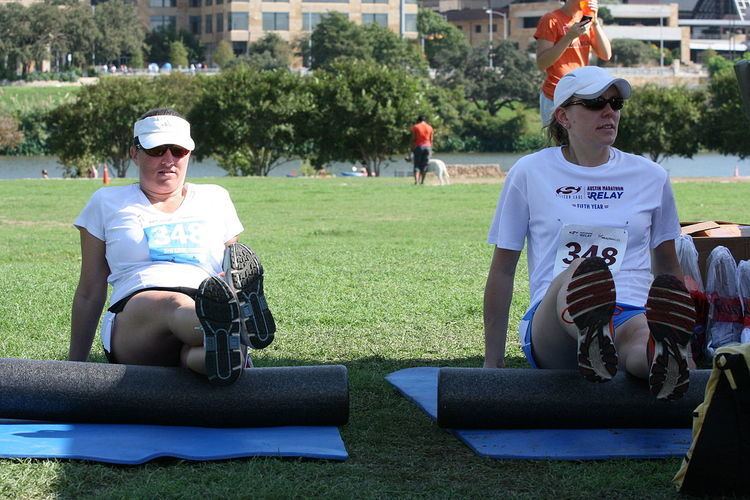 | ||
Foam rolling is a self-myofascial release (SMR) technique that is used by athletes and physical therapists to inhibit overactive muscles. This form of stretching utilizes the concept of autogenic inhibition to improve soft tissue extensibility, thus relaxing the muscle and allowing the activation of the antagonist muscle.
This technique can be effective for many muscles, including: gastrocnemius, latissimus dorsi, piriformis, adductors, quadriceps, hamstrings, hip flexors, thoracic spine (trapezius and rhomboids), and TFL. It is accomplished by rolling the foam roller under each muscle group until a tender area is found, and maintaining pressure on the tender areas (known as trigger points) for 30 to 60 seconds.
The equipment that is used for foam rolling usually consists of a foam cylinder of various sizes; commonly 30 centimetres long, 15 centimetres in diameter. However, longer foam rolls up to 90 centimetres in length are produced for rolling over certain muscles in the back. A variety of foam roller densities exists, often denoted by the color of the roller. Those new to foam rolling, or those who have particularly tight muscles or severe trigger points, often start with a softer foam roll.
Foam roller technology is increasingly evolving for home self-myofascial release therapy, exercise and stretching. Historically, since as recent as 2005, the first foam roller was patented for use as a therapy tool for self-myofascial release muscle therapies. Foam rollers have evolved to offer individuals options other than simply just size and density characteristics. Foam rollers with handles are now available for home therapies and exercise. Another unique feature available for home foam rolling therapy is a vibrating foam roller.
History
Foam rollers were first used in the Feldenkrais method as body supports and to do standing balance work in the 1980s. In 1987 physical therapist Sean Gallagher who was doing his Feldenkrais training started to use foam rollers as a self massage tool after experimenting with them and having the dancers at the Broadway show Jerome Robbins Broadway try them out. They soon became popular within the Broadway and dance community as an affordable alternative for massage. Other therapists who had done the Feldenkrais training also started to use foam rollers as an exercise tool for balance and strengthening. Since approximately 2009 foam rolling has become increasingly associated with Fascia Training, where it is one of the key elements.
